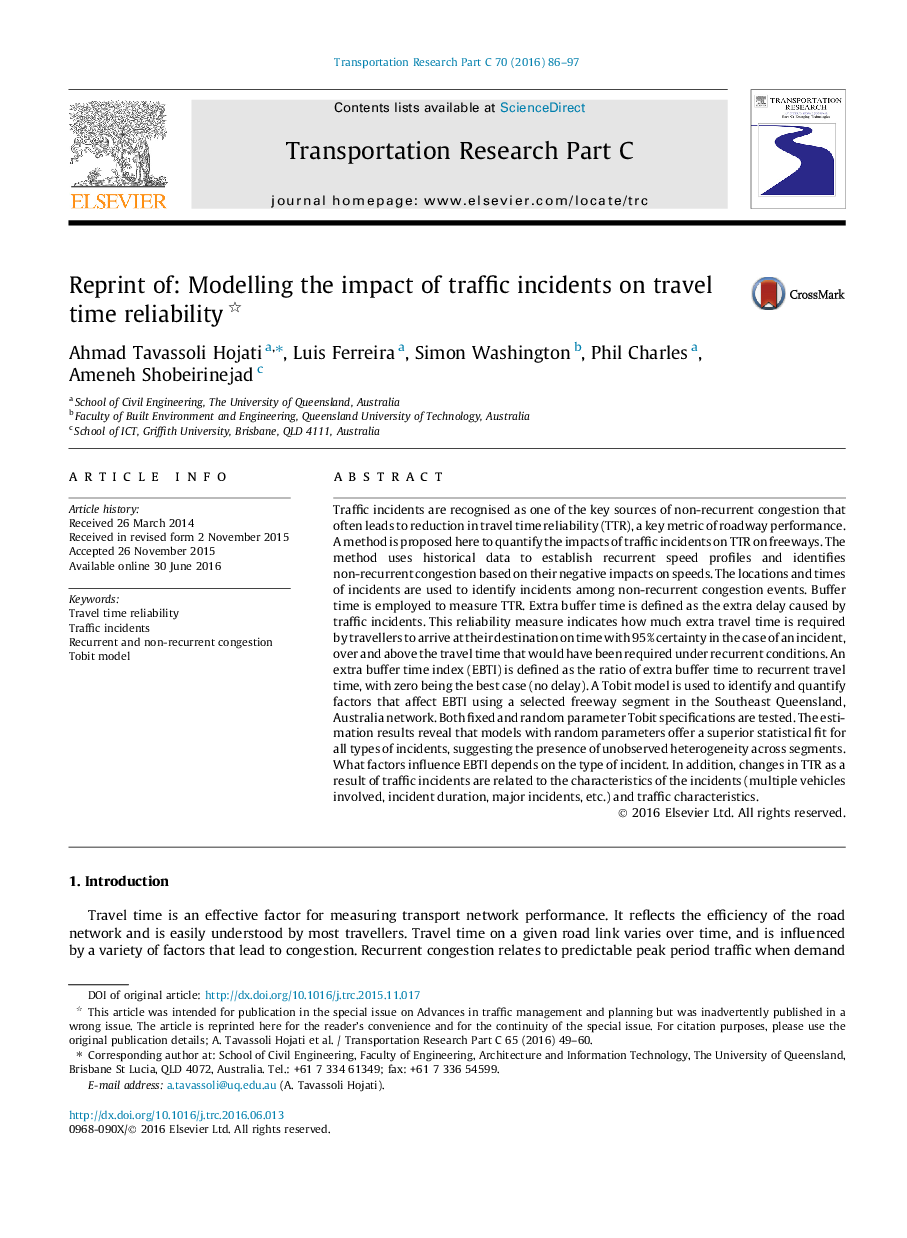| Article ID | Journal | Published Year | Pages | File Type |
|---|---|---|---|---|
| 4968535 | Transportation Research Part C: Emerging Technologies | 2016 | 12 Pages |
Abstract
Traffic incidents are recognised as one of the key sources of non-recurrent congestion that often leads to reduction in travel time reliability (TTR), a key metric of roadway performance. A method is proposed here to quantify the impacts of traffic incidents on TTR on freeways. The method uses historical data to establish recurrent speed profiles and identifies non-recurrent congestion based on their negative impacts on speeds. The locations and times of incidents are used to identify incidents among non-recurrent congestion events. Buffer time is employed to measure TTR. Extra buffer time is defined as the extra delay caused by traffic incidents. This reliability measure indicates how much extra travel time is required by travellers to arrive at their destination on time with 95% certainty in the case of an incident, over and above the travel time that would have been required under recurrent conditions. An extra buffer time index (EBTI) is defined as the ratio of extra buffer time to recurrent travel time, with zero being the best case (no delay). A Tobit model is used to identify and quantify factors that affect EBTI using a selected freeway segment in the Southeast Queensland, Australia network. Both fixed and random parameter Tobit specifications are tested. The estimation results reveal that models with random parameters offer a superior statistical fit for all types of incidents, suggesting the presence of unobserved heterogeneity across segments. What factors influence EBTI depends on the type of incident. In addition, changes in TTR as a result of traffic incidents are related to the characteristics of the incidents (multiple vehicles involved, incident duration, major incidents, etc.) and traffic characteristics.
Related Topics
Physical Sciences and Engineering
Computer Science
Computer Science Applications
Authors
Ahmad Tavassoli Hojati, Luis Ferreira, Simon Washington, Phil Charles, Ameneh Shobeirinejad,
